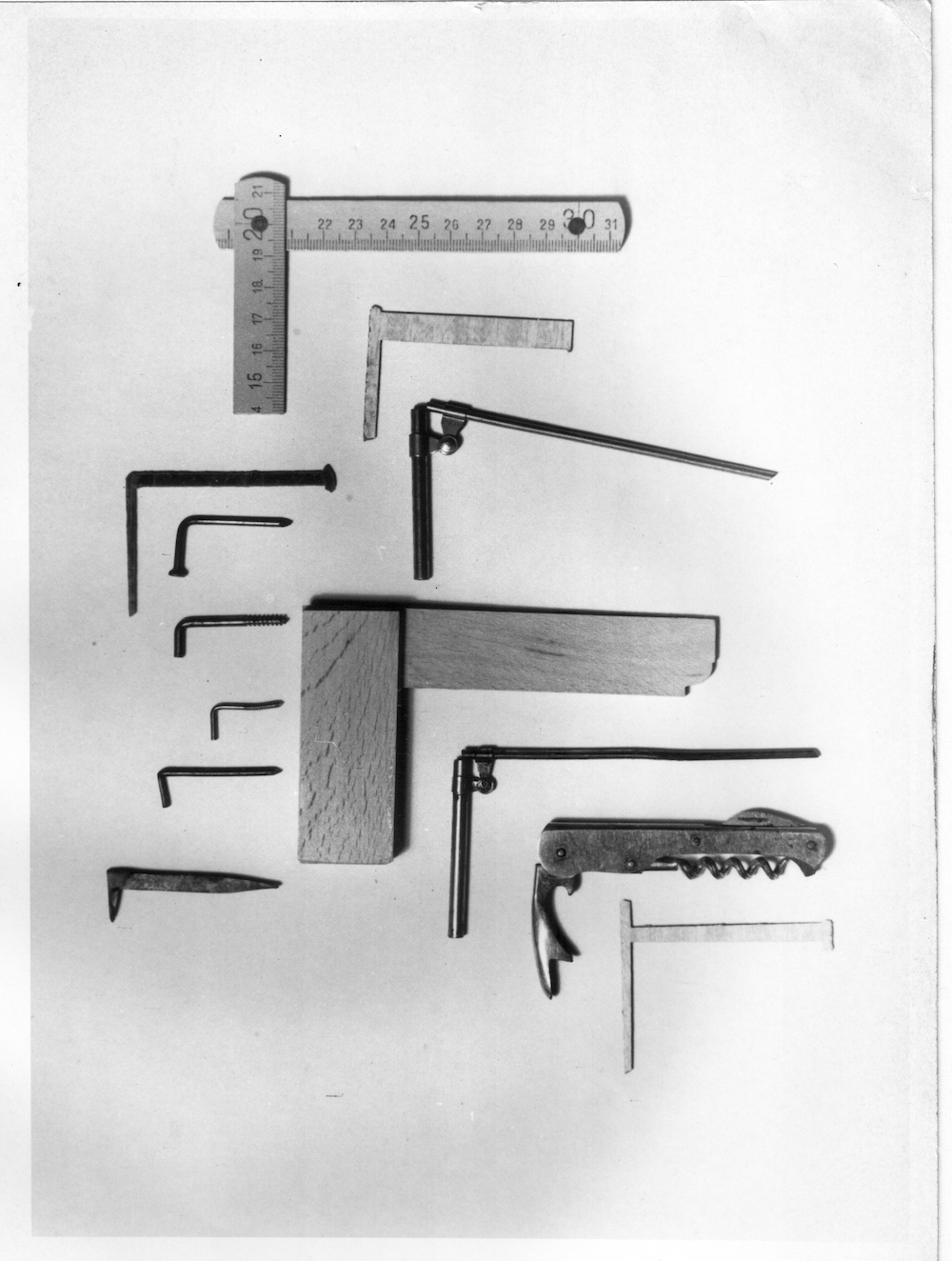Běla Kolářová (1923 – 2010)
Běla Kolářová (1923 – 2010) was a unique and pioneering self-taught artist, a proponent of Czech photography of the Cold War avant garde. From 1961 she aligned with the progressive art movement Kriovatka (Crossroads) which rejected Soviet-sanctioned Socialist Realism.
“Gradually I began to perceive a world which, in fact, was left out unnoticed by photographers. A world so negligible and everyday as if past the merit of being photographed. Small things, indispensable for our life yet taken for granted so that we can hardly notice them in spite of their great number…” Běla Kolářová, ‘One of the Ways’
Through her oeuvre, Běla pioneered a conceptual art which bore witness to the discarded, intimate everyday objects of people’s lives. She fused her affinity for small domestic objects and geometrical composition into a challenge to mainstream photography, developing her style over the 60s, 70s, and 80s into a new abstract contemporary form and a feminist doctrine. She created her camera-less radiograms or ‘artificial negatives’ by pressing objects like fish scales, vegetable peel, and fabric into layers of paraffin on small pieces of cellophane, projected onto light-sensitive paper; meanwhile, her post-1964 collages and assemblages (‘swatches’) included objects such as make-up, needles and paper clips.
One of her best known photographic works, ‘Letters from Portugal’ 1964, can be seen in the collection of the Metropolitan Museum of Art; it is described as ‘clippings of her own hair suggesting a type of secret writing, a formal calligraphy hidden within objects themselves.’
Běla went into exile in Paris in 1985 and was blacklisted by the state, only returning to Prague in 1999. Although her work has been overshadowed by that of her husband, the influential Czech artist and poet Jiri Kolar, Běla has been the subject of renewed attention in recent years. Her work is held in international collections including The Museum of Decorative Arts, Prague, The Tate and MoMA , where her ‘Radiogram of Circle’ (1962/3) was included in the 2017 exhibition ‘Making Space. Women Artists and Postwar Abstraction’. In this radiogram, which echoes the geometric constructivism of the 1930s, the movement of light is captured by attaching photographic paper to a rotating device.
The only UK posthumous retrospective exhibition of Bela’s work took place at Raven Row in 2013, which included her ‘Artificial negative’ from 1961 and ‘Hair Locks’ from 1964.
By Paula Vellet












